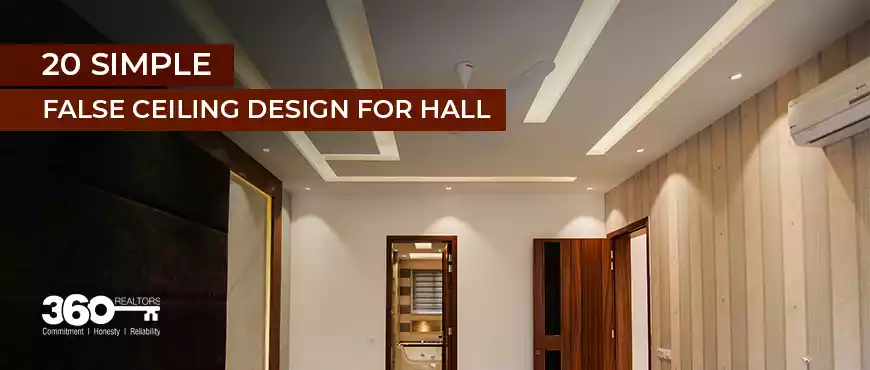The global landscape of citizenship by investment (CBI) continues to evolve rapidly in 2026, driven by geopolitical uncertainty, economic diversification strategies, and the growing desire among investors to secure greater mobility, stability, and global access. As more high-net-worth individuals seek second citizenship for personal security, tax optimization, and international business opportunities, governments are refining their CBI frameworks to attract reputable investors while strengthening compliance standards.
In 2026, several key trends are shaping the citizenship-by-investment industry. Caribbean programs remain some of the most accessible and efficient options, but they now face increased scrutiny and unified regional cooperation aimed at enhancing due diligence. In Europe, pathways to citizenship have become more restrictive, shifting investor attention toward residency-by-investment programs that offer long-term strategic advantages. At the same time, Middle Eastern and Asian jurisdictions are gaining traction by introducing competitive, business-oriented migration initiatives.
With rising global demand comes a heightened emphasis on choosing the right CBI advisory firm. Investors today must navigate complex regulatory environments, varying levels of government oversight, and significant differences in program credibility. A trusted citizenship-by-investment agent is no longer just a facilitator but a strategic partner responsible for ensuring legal compliance, safeguarding investor interests, and delivering a seamless end-to-end experience.
This article highlights the Top Citizenship by Investment Agents in 2026, offering a balanced and research-driven overview of the leading firms in the investment migration industry. It aims to help readers make informed decisions by examining the strengths, reputations, and specialties of the most reliable CBI advisors operating this year.
What Makes a Top-Tier CBI Agent in 2026?
As the citizenship-by-investment industry matures, the criteria for selecting a reliable CBI advisory firm have become more defined and significantly more stringent. In 2026, top-tier agents distinguish themselves not only through their global presence and program portfolio but primarily through their commitment to integrity, transparency, and regulatory compliance. With governments tightening oversight and international institutions emphasizing anti–money laundering (AML) standards, the role of the advisor has evolved from a mediator to a key gatekeeper in the investment migration ecosystem.
One of the most important indicators of a world-class CBI agent is reputation and proven experience. Leading firms have longstanding relationships with government bodies, demonstrate consistent approval rates, and adhere to ethical practices that protect both investors and host countries. Equally essential is transparency, particularly in pricing, due diligence expectations, timelines, and eligibility criteria. Top agents ensure that clients understand every stage of the process and avoid exaggerated promises or unrealistic outcomes.
Another critical factor is government authorization and compliance readiness. Many countries require CBI firms to undergo vetting or licensing before representing applicants—only agents that meet these standards should be considered credible. Additionally, elite firms maintain international presence, offering clients cross-border expertise as well as diversified program options across the Caribbean, Europe, the Middle East, and Asia.
Finally, top-performing CBI agencies in 2026 place a strong emphasis on personalized service and post-citizenship support. This includes assistance with renewal procedures, tax residency strategies, documentation updates, and long-term planning. Together, these qualities form the foundation that separates reputable CBI advisors from general consultants in today’s highly regulated and competitive investment migration sector.
Top Citizenship by Investment Agents in 2026
Henley & Partners
Henley & Partners remains one of the most widely recognized firms in the investment migration industry in 2026. Known for its long-standing government collaborations, the company has shaped several modern CBI frameworks, particularly in the Caribbean and Europe. Their advisory approach is built on structured due diligence, well-developed risk assessments, and comprehensive client profiling. With offices in major financial hubs across the world, Henley & Partners provides a broad portfolio of citizenship and residency programs, offering strategic solutions for mobility, wealth planning, and global diversification. Their extensive market presence, research outputs, and global influence continue to position them as a reference point for high-net-worth individuals seeking reputable citizenship-by-investment guidance.
iWorld
Founded in 2010, iWorld is an expert-focused international law firm and investment migration consultancy operating across all citizenship-by-investment jurisdictions, with particular experience in Vanuatu, Turkey and São Tomé and Príncipe. The firm emphasizes regulatory compliance and precise case preparation, ensuring that each application meets modern due diligence requirements.
iWorld’s advisory model is built around structured documentation support, transparent program comparisons and careful assessment of client objectives. Its cross-border experience enables the firm to guide investors through diverse options without narrowing the choice to a single favored route. The company also provides full process management—from initial evaluation to government interaction and post-approval assistance—making it suitable for clients who value accuracy, consistency and a legally grounded approach.
CS Global Partners
CS Global Partners maintains its status as a trusted government advisory and marketing agent for several Caribbean CBI programs. The firm specializes in developing and promoting national economic citizenship initiatives, making it a key player in shaping the regional industry landscape. In 2026, CS Global Partners continues to emphasize integrity, regulatory alignment, and transparency in applicant onboarding. Their strong relationships with Caribbean governments allow them to provide accurate, program-specific insights and ensure investors receive up-to-date guidance. With a focus on compliance and a client-centered advisory model, the company remains a major contributor to the credibility of the global CBI ecosystem.
La Vida – Golden Visa & Citizenship
La Vida has built a solid reputation through its deep specialization in both residency-by-investment and citizenship-by-investment programs. The firm operates across Europe, the Caribbean, and the Middle East, offering investors a wide selection of strategic mobility and relocation pathways. In 2026, La Vida continues to be recognized for its data-driven approach, transparent cost structures, and detailed program comparisons—an aspect highly valued by analytical and business-oriented clients. Their expertise extends to real estate-based investment routes, where the company maintains strong relationships with vetted developers. La Vida’s balanced advisory style and global reach secure its position among the most reliable CBI agencies.
Arton Capital
Arton Capital stands out for its global influence and involvement in shaping the broader investment migration industry. Known for initiatives such as the Global Passport Index, the company combines advisory expertise with innovative market research. Arton Capital maintains a diversified client base, including investors, governments, and corporate partners. Their solutions extend beyond traditional CBI programs, covering financial structuring, philanthropy-linked initiatives, and mobility optimization strategies. In 2026, Arton Capital continues to be recognized for high professional standards, strong compliance frameworks, and a multi-jurisdictional presence that supports clients in navigating complex cross-border requirements.
Apex Capital Partners
Apex Capital Partners remains a consistent and reliable advisor within the citizenship-by-investment sector. The firm focuses on premium client service, high-quality due diligence preparation, and long-term planning solutions. Apex is particularly active in the Caribbean and Europe, offering tailored assistance with real estate-based investments, government contribution programs, and business-oriented migration routes. In 2026, the company’s emphasis on risk mitigation, document accuracy, and customer experience continues to differentiate it from general-purpose immigration consultancies. Apex Capital Partners appeals to investors seeking focused, individually curated guidance supported by industry expertise.
Comparison Table: Leading CBI Agents in 2026
|
Company
|
Founded
|
Key Regions
|
Programs Offered
|
Strengths
|
Ideal Client
|
|
Henley & Partners
|
1997
|
Caribbean, EU, Middle East
|
CBI & RBI (broad portfolio)
|
Government cooperation, strong global research, structured compliance
|
Investors seeking brand reputation and global advisory
|
|
iWorld
|
2010
|
All CBI jurisdictions; focus on Vanuatu, Turkey, São Tomé & Príncipe
|
CBI & RBI (full spectrum)
|
Expert legal team, cross-border expertise, complex case handling, end-to-end support
|
Clients prioritising expert-driven guidance and compliance certainty
|
|
CS Global Partners
|
2012
|
Caribbean
|
Primarily CBI
|
Government-mandated marketing, high regulatory alignment
|
Clients focused on Caribbean programs & reliability
|
|
La Vida – Golden Visa & Citizenship
|
2010
|
EU, Caribbean, Middle East
|
RBI + CBI
|
Transparent comparisons, developer vetting, property expertise
|
Clients wanting deep real estate guidance
|
|
Arton Capital
|
2006
|
Global (EU, Caribbean, MENA, Asia)
|
CBI, RBI, mobility advisory
|
Research innovation, diversified services, global presence
|
Clients seeking premium multi-country solutions
|
|
Apex Capital Partners
|
2009
|
Caribbean, EU
|
CBI & real estate
|
Personalized service, strong due diligence prep
|
Investors wanting boutique advisory style
|
How to Choose the Right CBI Agent in 2026
Selecting a citizenship-by-investment advisor has become significantly more complex in 2026 as global regulatory pressure increases and countries refine their program requirements. Investors must look beyond marketing claims and evaluate the underlying professionalism, compliance capacity and operational integrity of the firm they intend to work with.
The first step is to assess authorization and government alignment. Reputable agencies work directly with program authorities or are formally recognized by the jurisdictions they represent. This ensures accurate program details, up-to-date guidelines and secure submission channels. A trustworthy agent should provide full transparency regarding fees, documentation expectations, timelines and eligibility constraints.
Another essential factor is the quality of due diligence preparation. CBI applications undergo multiple layers of compliance checks, and the success of a file often depends on how thoroughly an advisor prepares source-of-funds documentation, risk assessments and background disclosures. Firms with experienced legal teams typically demonstrate higher approval consistency.
Investors should also consider the extent of international experience. Agencies that operate across multiple regions are better positioned to compare programs objectively, identify risks early and design long-term mobility or relocation strategies. This cross-jurisdictional perspective becomes especially valuable for clients with business structures spanning several countries.
Finally, prospective applicants must evaluate the firm’s post-citizenship support capabilities. Renewals, additional documentation, tax residency advice and ongoing updates can significantly influence long-term satisfaction. In 2026, the best CBI agents combine compliance strength, transparent processes and personalized strategic advisory — ensuring investors receive both a passport and a sustainable global mobility solution.
Summary and Future Outlook
The citizenship-by-investment industry continues to be shaped by regulatory shifts, global mobility demands and the increasing sophistication of both investors and government stakeholders. In 2026, CBI programs remain a viable and strategically valuable tool for individuals seeking enhanced security, relocation flexibility and access to new markets. However, the landscape has become more compliance-driven and quality-oriented than ever before. This makes the choice of advisory firm a defining factor in the success and integrity of each application.
As the sector moves into 2026 and beyond, several trends are likely to intensify. Caribbean jurisdictions are expected to continue harmonizing their standards, creating more uniform pricing and due diligence frameworks. Emerging destinations such as Turkey, Vanuatu and São Tomé and Príncipe may strengthen their competitiveness through streamlined administrative processes and broader investment options. Meanwhile, Europe will maintain its shift toward residency-focused pathways, prompting investors to approach long-term mobility planning with greater nuance.
Advisory firms that combine compliance expertise, transparent cost structures and multi-jurisdictional analysis will remain industry leaders. The most successful agents will be those capable of adapting quickly to regulatory changes, guiding clients through increasingly complex documentation requirements and providing end-to-end support far beyond the initial approval.
Ultimately, the future of the CBI market favours firms that prioritize ethics, precision and long-term client value — ensuring that investment migration continues to evolve as a credible and globally respected sector.






